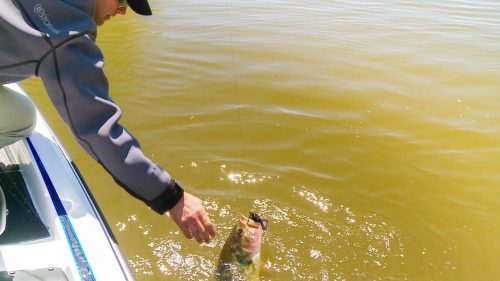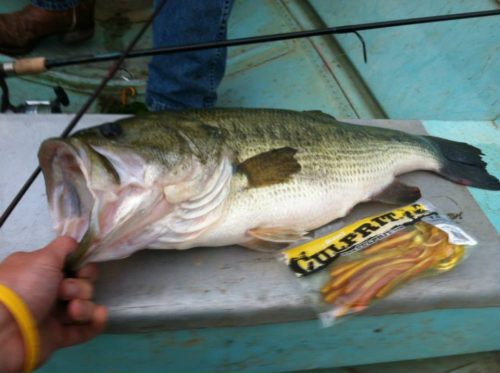Many of the bass around the country are post spawn in May or at least approaching the tail end of the spawn. This means that you have to change gears a little but overall, it’s a fun time to bass fish. For many folks, two tactical approaches with plastics take center stage in May. Both can be very productive if you stick with them and it doesn’t hurt to do a little of one and some of the other in the same day. What it comes down to is that some bass hang around the shallows while others exit stage left and head deeper.
The first technique requires getting back to the basics. Fish away from the bank with the Original Culprit Worm or the 10 inch Culprit Worm. A Texas-rigged Original Culprit Worm fished on the deeper ends of flat points that are leading out of spawning areas is always a great choice. This is where the post spawn bass hang out for a while following the grueling spawn and bed protection process. The Original Culprit Worm is a popular choice but you could upgrade to the 10 inch Worm if the water is off-colored or if you are fishing around grass that would require a little extra body length to make the worm stand out. In terms of rigging, be careful not to put too large of a hook or weight in the setup. A hook that is too large can make the body of the worm too rigid which minimizes the action of the body and ribbon tail. A large weight can spook the recovering and gun-shy post spawn bass by plopping down too firmly around them. Using a 2/0 (in the Original) or a 3/0 (in the 10 inch) worm hook with a non-pegged 3/16 weight is a good bet for both the worm action and so that the setup barely ticks along the bottom with 10-12lb. line. This is a slower way of fishing at times but it’s a great way to catch a monster May bass.
The second technique requires a little more moving. Swimming a 1/4 or 3/8 ounce jig with a Culprit DW3 trailer is a great choice to cover water and find those bass that remain shallow while guarding fry. The balls of bass fry are usually up in the water column and hover around specific pieces of cover like logs, grass clumps, or dock pilings…just to name a few. As you are swimming the jig around shallow cover, pay attention if you scatter a ball of fry. When the fry scatters, a decent bass is usually nearby. It may even be worth an extra cast or two (at different angles) if the parent bass does not bite the first time. You will also want to pay attention to what color swim jig generates the most strikes. This may have to do with different variables like water color or bass temperament. Some days black may be the best color choice. I’ve seen Watermelon Red Flake work when it exactly matched the bream that were stirring the hornets’ nests. However, I mostly rely on white because both me and the bass can see it clearly. Most importantly, I keep the swim jig and me moving because swimming a jig is a plan where “lack of” patience is the virtue. It’s all about the bass’s reaction to the first (or maybe a quick second) look they get at the bait. So put the trolling motor on high, keep a line wet and by the end of the day it will pay off. And for the record- you can’t beat the strike visuals in swim jig fishing, it’s like watching a train wreck. Enjoy your May!

